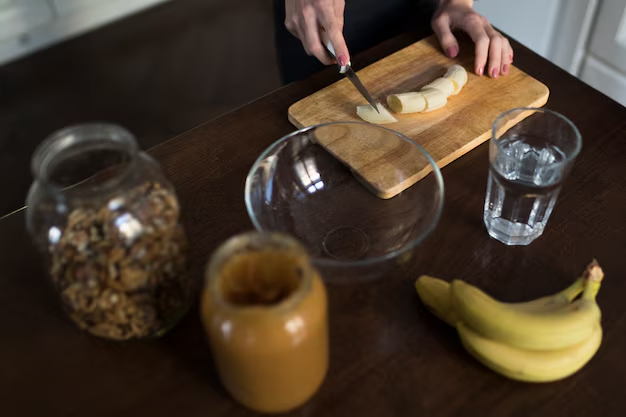Safely Storing Hot Food: When to Refrigerate and Why It Matters
Keeping your food fresh, safe, and flavorful requires understanding the best practices for refrigerating hot dishes. This decision is about much more than convenience; it's crucial for maintaining quality and safety in your kitchen. Let's explore when and why you should put hot food in the refrigerator.
🕒 Timing is Everything: When to Refrigerate Hot Food
One common question that arises in the kitchen is whether hot food should go straight into the refrigerator or wait until it cools down. The answer isn't a simple yes or no; it depends on several factors including food safety and storage effectiveness.
The Two-Hour Rule
The USDA advises that perishable foods should not be left out at room temperature for more than two hours. This rule helps minimize the risk of bacterial growth, which can lead to foodborne illnesses. However, this advice can sometimes lead to confusion about whether hot food should be cooled completely before refrigeration.
Best Practice: Cooling Quickly
Rapid cooling methods are often recommended to ensure both safety and quality. Allow hot dishes to cool slightly at room temperature for about 20-30 minutes. This short window allows heat to dissipate without breaching the two-hour safety mark. Use shallow containers or metal trays to speed up the cooling process.
🔹 Tip: Transfer hot food into smaller portions. It helps accelerate cooling and ensures even temperature distribution.
🔍 Understanding Bacterial Growth and Food Safety
To make informed decisions about storing hot food, it's helpful to understand the principle of bacterial growth.
The Danger Zone
Food temperatures between 40°F (4°C) and 140°F (60°C) create what's commonly referred to as the 'Danger Zone'. In this range, bacteria can multiply rapidly, roughly doubling every 20 minutes. To minimize exposure in this temperature range, it's vital to minimize the time food remains at these temperatures.
Debunking Myths
Contrary to some common beliefs, putting hot food directly into the fridge does not necessarily cause harm to the appliance nor decrease energy efficiency drastically. Most modern refrigerators are capable of handling the extra load of hot food without significant impact.
🍲 Practical Strategies for Refrigerating Hot Food
Shallow Containers
Using shallow containers maximizes the surface area of the food exposed to cool air, thereby speeding up the cooling process. This method is efficient for soups, stews, and casseroles.
Ice Baths
For particularly large or hot dishes, consider using an ice bath to expedite cooling. Place the container in a larger dish filled with ice and water, and stir occasionally to distribute heat evenly.
Air Circulation
Arranging containers so there's adequate space around them aids in airflow within the refrigerator, ensuring faster cooling and reducing strain on the fridge's cooling system.
Covering Food
Once food has cooled sufficiently, covering it helps retain moisture and prevent cross-contamination. Options include lids, plastic wrap, or foil, depending on the container type.
🌡️ Managing Your Refrigerator's Efficiency
Proper care and management of your refrigerator can enhance its ability to handle and cool hot foods effectively.
Optimal Temperature Settings
Set your refrigerator to maintain a temperature below 40°F (4°C). Keeping a thermometer inside can help ensure it stays within this range and provides consistent cooling.
Organization
Arranging items in your refrigerator strategically prevents overcrowding and allows for better air circulation. Consider labeling and organizing by type or date to ensure easy access and reduce the risk of spoilage.
Regular Maintenance
Regularly cleaning and checking your refrigerator's components, such as the condenser coils, improves efficiency and extends the appliance's lifespan.
📋 Quick Takeaways for Refrigerating Hot Food
- ⏰ Two-Hour Rule: Don’t leave perishable food out for more than two hours.
- 🌬️ Rapid Cooling: Aim for rapid cooling by using shallow containers or dividing into smaller portions.
- 🌡️ Danger Zone: Avoid keeping food between 40°F and 140°F, where bacterial growth thrives.
- 🔀 Efficient Cooling Strategies:
- Use an ice bath if necessary.
- Ensure good air circulation.
- Cover food adequately once cooled.
Integrating Refrigeration Practices with Your Cooking
To smoothly integrate refrigerating hot food into your kitchen routine, it’s important to align these practices with your existing habits and schedules.
Meal Planning
When planning meals, consider the space available in your refrigerator and plan to use leftovers efficiently. This foresight ensures you have optimal space for proper food storage.
Cooking in Batches
Cooking in larger quantities saves time but requires careful storage plans to ensure nothing goes to waste.
Using Food Storage Gadgets
Utilize gadgets such as vacuum sealers or temperature sensors for more precise food storage and management.
🤔 Final Thoughts on Refrigerating Hot Foods
The question of when to refrigerate hot food is more significant than it initially seems. It involves striking a balance between food safety, refrigeration efficiency, and practicality. Understanding and implementing these strategies ensures food remains safe, delicious, and ready to serve whenever you need it. Proper refrigeration is not just about putting food away; it's an essential step in food preservation and safety that enhances your overall culinary experience.
By adopting these practices, you can feel confident in your ability to safely store hot foods, keeping your meals fresh and your kitchen running smoothly. Whether you're a seasoned chef or a beginner cook, integrating these guidelines will set a foundation for healthier and more efficient food practices in your home.
